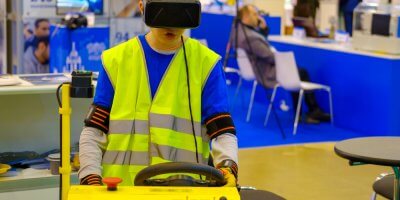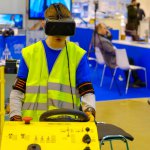
VR helps bring training to life and engage employees better. Source: Shutterstock
VR adds value to health and safety training in the workplace
DESPITE technology transforming offices and manufacturing facilities, managers are often concerned with the health and safety of their workers and employees.
Training to avoid health and safety issues is critical — Statistics show that 2 million work-related deaths and 650 million workplace accidents are recorded annually — so the question is: Can technology help provide better health and safety training?
The answer is: Yes. Virtual Reality (VR) has the potential to revolutionize health and safety training in the workplace.
According to studies, VR can provide more realistic training to employees, allowing them to better react to emergency and hazardous situations that pose a threat to their health or safety.
The University of Nottingham, for example, found that the use of VR in training can ensure employees safety in ways that traditional training never could.
The institute simulated a real-world fire outbreak situation and equipped a group of participants with VR devices to stimulate their sense of sight, touch, smell and hearing.
Based on their observation, it was evident that participants were more responsive, alert, and engaged — which are undoubtedly the qualities that should benchmark an effective training session.
As VR generates a realistic scenario of an emergency, participants’ in the University of Nottingham study found that their senses are drastically heightened, causing them to proactively trying to avoid the fire and evacuate safely from the scene as they received real-time instructions.
Based on the demonstration, it’s clear that VR enables participants to better understand protocols and procedures that are otherwise simply read out to them or showcased via a video.
Apart from getting employees to be more motivated and engaged in the training process, VR also adds value by triggering a sense of urgency that demands immediate action. The training, effectively, becomes more practical in nature.
VR also accurately depicts the risks of unsafe work practices. Employees can better estimate the danger they are in and leverage safety measures in different situations.
Typically, health and safety training involves employees sitting through a powerpoint lecture, accompanied by physical demonstrations on safety procedures and floor protocol.
Then, employees are immediately tested on what they learned during training. Most of the time, they ace these tests — although they don’t retain any of the knowledge.
This is because the training was not impactful enough for them to remember what was learned.
VR-powered training, on the other hand, allows higher retention as well as effective protocol reinforcement since employees are physically immersed in the experience.
Managers around the world are choosing to employ the technology as they see the value it brings to their training sessions — practical and highly engaging training that can be done on-site at any desired time is, as anyone can imagine, very promising.
READ MORE
- Ethical AI: The renewed importance of safeguarding data and customer privacy in Generative AI applications
- How Japan balances AI-driven opportunities with cybersecurity needs
- Deploying SASE: Benchmarking your approach
- Insurance everywhere all at once: the digital transformation of the APAC insurance industry
- Google parent Alphabet eyes HubSpot: A potential acquisition shaping the future of CRM


